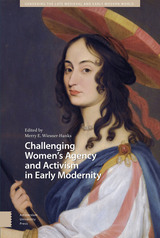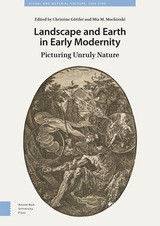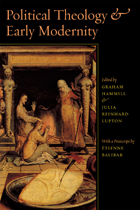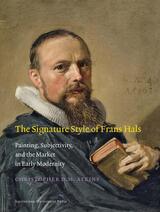4 books about Early Modernity

Challenging Women's Agency and Activism in Early Modernity
Merry Wiesner-Hanks
Amsterdam University Press, 2020
Examining women's agency in the past has taken on new urgency in the current moment of resurgent patriarchy, Women's Marches, and the global #MeToo movement. The essays in this collection consider women's agency in the Renaissance and early modern period, an era that also saw both increasing patriarchal constraints and new forms of women's actions and activism. They address a capacious set of questions about how women, from their teenage years through older adulthood, asserted agency through social practices, speech acts, legal disputes, writing, viewing and exchanging images, travel, and community building. Despite family and social pressures, the actions of girls and women could shape their lives and challenge male-dominated institutions. This volume includes thirteen essays by scholars from many disciplines, which analyze people, texts, objects, and images from many different parts of Europe, as well as things and people that crossed the Atlantic and the Pacific.
[more]

Landscape and Earth in Early Modernity
Picturing Unruly Nature
Christine Göttler
Amsterdam University Press, 2023
Early modern views of nature and the earth upended the depiction of land. Landscape emerged as a site of artistic exploration at a time when environments and ecologies were reshaped and transformed. This volume historicizes the contingency of an ever-changing elemental world, reframing and reimagining landscape as a mediating space in the interplay between the natural and the artificial, the real and the imaginary, the internal and the external. The lens of the “unruly” reveals the latent landscapes that undergirded their conception, the elemental resources that resurfaced from the bowels of the earth, the staged topographies that unsettled the boundaries between nature and technology, and the fragile ecologies that undermined the status quo of human environs. Landscape and Earth in Early Modernity: Picturing Unruly Nature argues for an art history attentive to the vicissitudes of circumstance and attributes the regrounding of representation during a transitional age to the unquiet landscape.
[more]

Political Theology and Early Modernity
Edited by Graham Hammill and Julia Reinhard Lupton
University of Chicago Press, 2012
Political theology is a distinctly modern problem, one that takes shape in some of the most important theoretical writings of the twentieth and twenty-first centuries. But its origins stem from the early modern period, in medieval iconographies of sacred kinship and the critique of traditional sovereignty mounted by Hobbes and Spinoza. In this book, Graham Hammill and Julia Reinhard Lupton assemble established and emerging scholars in early modern studies to examine the role played by sixteenth- and seventeenth-century literature and thought in modern conceptions of political theology.
Political Theology and Early Modernity explores texts by Shakespeare, Machiavelli, Milton, and others that have served as points of departure for such thinkers as Schmitt, Strauss, Benjamin, and Arendt. Written from a spectrum of positions ranging from renewed defenses of secularism to attempts to reconceive the religious character of collective life and literary experience, these essays probe moments of productive conflict, disavowal, and entanglement in politics and religion as they pass between early modern and modern scenes of thought. This stimulating collection is the first to answer not only how Renaissance and baroque literature help explain the persistence of political theology in modernity and postmodernity, but also how the reemergence of political theology as an intellectual and political problem deepens our understanding of the early modern period.
[more]

The Signature Style of Frans Hals
Painting, Subjectivity, and the Market in Early Modernity
Christopher D. M. Atkins
Amsterdam University Press, 2012
This richly illustrated study is the first consider the manifold functions and meanings of Hals’s distinctive handling of paint. Atkins explores the uniqueness of Hals’s approach to painting and the relationship of his manner to seventeenth-century aesthetics. He also investigates the economic motivations and advantages of his methods, the operation of the style as a personal and workshop brand, and the apparent modernity of the artist’s style. The book seeks to understand the multiple levels on which Hals’s consciously cultivated manner of painting operated for himself, his pupils and assistants, his clients, and succeeding generations of viewers. As a result, the book offers a wholly new understanding of one of the leading artists of the Dutch Golden Age, and one of the most formative painters in the history of art in the Western tradition. It also provides a much needed interrogation of the interrelationships of subjectivity, style, authorship, methods of artistic and commercial production, economic consumption, and art theory in early modernity.
[more]
READERS
Browse our collection.
PUBLISHERS
See BiblioVault's publisher services.
STUDENT SERVICES
Files for college accessibility offices.
UChicago Accessibility Resources
home | accessibility | search | about | contact us
BiblioVault ® 2001 - 2024
The University of Chicago Press









